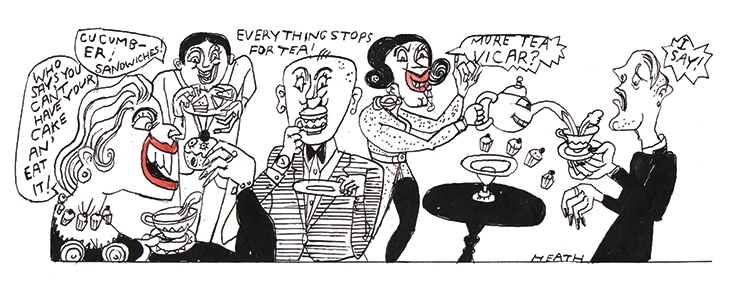The other day, I came across a description of afternoon tea written by Alfred Douglas in 1920: ‘Two kinds of bread and butter, white and brown, cucumber and tomato sandwiches, cut razor thin, scones, rock buns and then all the cakes — plum, madeira, caraway seed — the meal had about it the lavishness of a Victorian dinner.’
There are a few things about this feast which I find striking. It includes two kinds of bread and butter. Sliced bread and butter never features on the modern table but a century ago, people used it to fill themselves up; it took the edge off your appetite. Note also the simplicity of the cucumber and tomato sandwiches. Both are excellent if they’re made from good stuff. The crucial thing was that they were cut thin. Scones survive today but rock buns are rarities. Big cakes like madeira and caraway seed were essentially plain cakes, madeira being a simple butter sponge, and caraways the crucial element of seed cake — a vanished taste. Plum cake was rich fruit cake.
That was afternoon tea a century ago. There were of course variants — watercress sandwiches maybe — but in this impressive assembly what was interesting was how the essentials were simple, designed to fill you up as cheaply as possible. As a meal, afternoon tea used to be the cheap way to eat somewhere swanky.
We no longer do restrained simplicity and are missing out on the humble pleasure of a buttered crumpet
It has had something of a renaissance in recent years. Today, you’ll find afternoon tea in any grand establishment that wants to show off its traditional credentials. It’s changed utterly, though.
I’ve just been to tea at Claridge’s, and the menu was extraordinarily elaborate.









Comments
Join the debate for just £1 a month
Be part of the conversation with other Spectator readers by getting your first three months for £3.
UNLOCK ACCESS Just £1 a monthAlready a subscriber? Log in